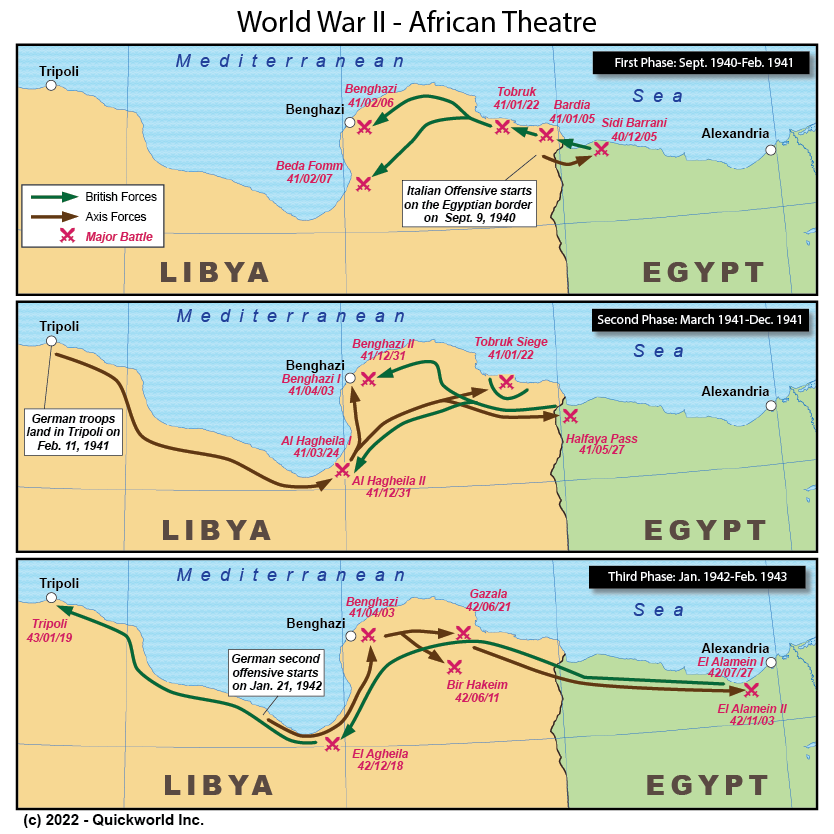Our World War II series focuses on the North African front, a critical part of the war, because both the Allies and the Axis were fighting for the control of the Suez Canal and the oilfields of the Arabian Peninsula.
At the start of the War, Libya was an Italian colony and Egypt was an independent country with strong ties to the United Kingdom. In the fall of 1940, the Italian army attacked from the Libya-Egypt border, hoping to overpower the British troops that had been sent to Egypt. This backfired quickly with the British taking the entirety of Cyrenaica, the Eastern province of Libya.
This led Germany to send troops to North Africa, and in the winter and spring of 1941, the Afrikakorps under the command of General Rommel pushed the British back to the Egyptian border, but a counterattack in the fall of 1941 pushed the Axis back out of Cyrenaica.
A second German offensive started in January 1942, and took them, 6 months later, to El Alamein a few miles from Alexandria, Egypt's main port. But the fight considerably weakened the Axis forces, while the British could count on reinforcement from Commonwealth and Allied troops. The Axis troops could never break the lock imposed by the British, and the counteroffensive was very fast. The last German troops left Libya in January 1943. Italy lost control of its North African colony, and never got it back.
As the British and Americans had landed in French North Africa, they now controlled all of Mediterranean Africa and were able to plan the invasion of Sicily of July 1943, the first step in the liberation of Europe.
The African Front


